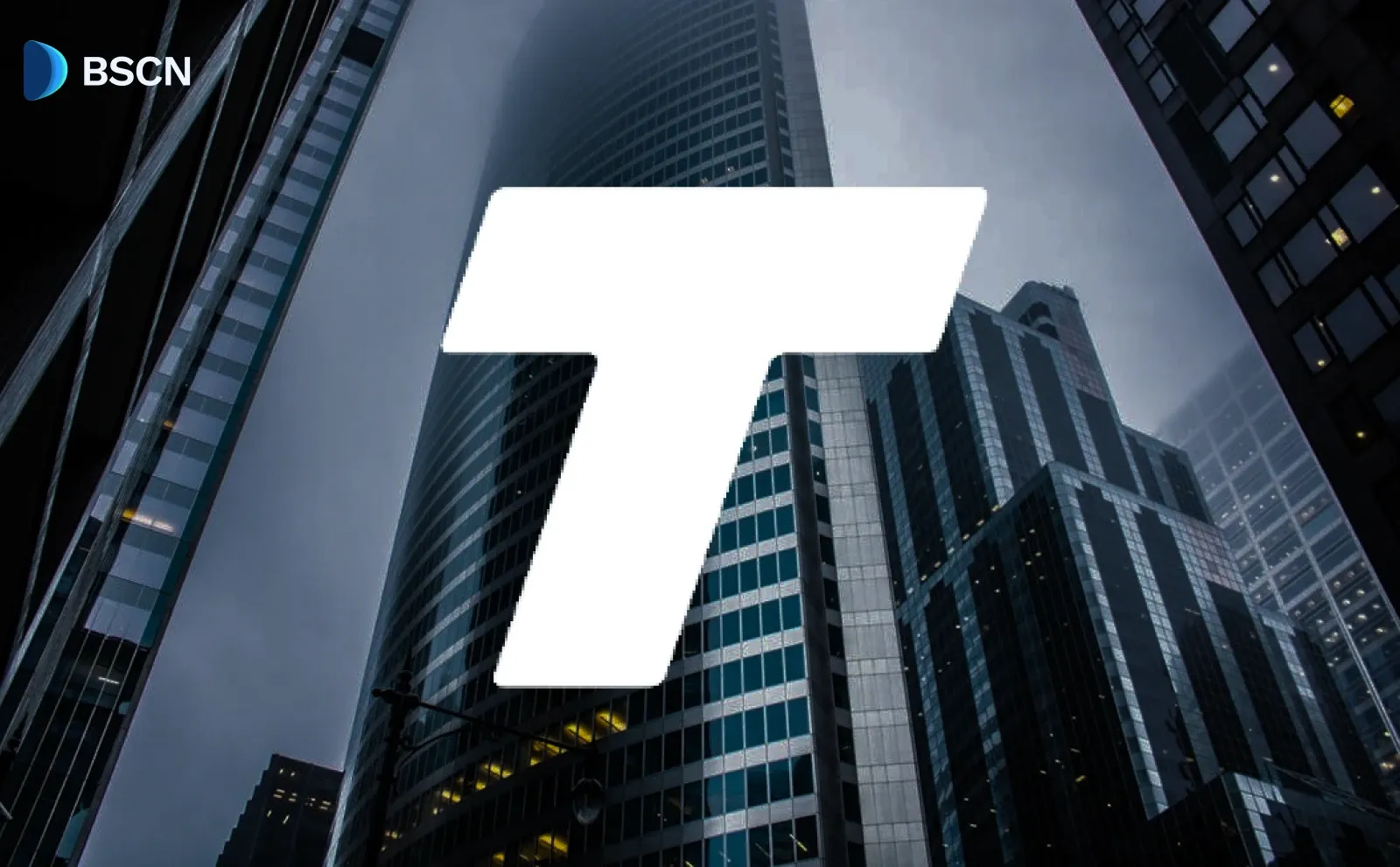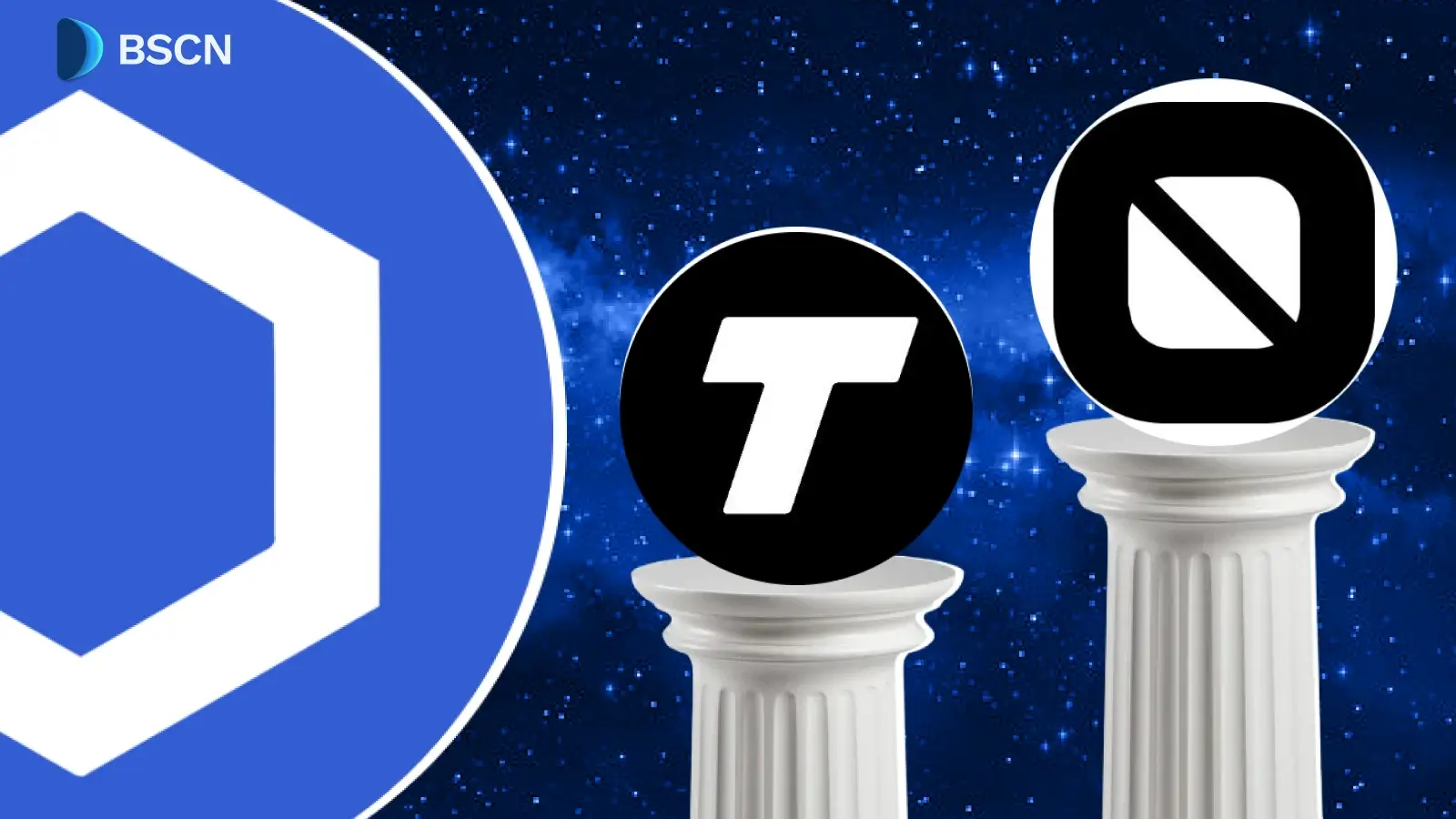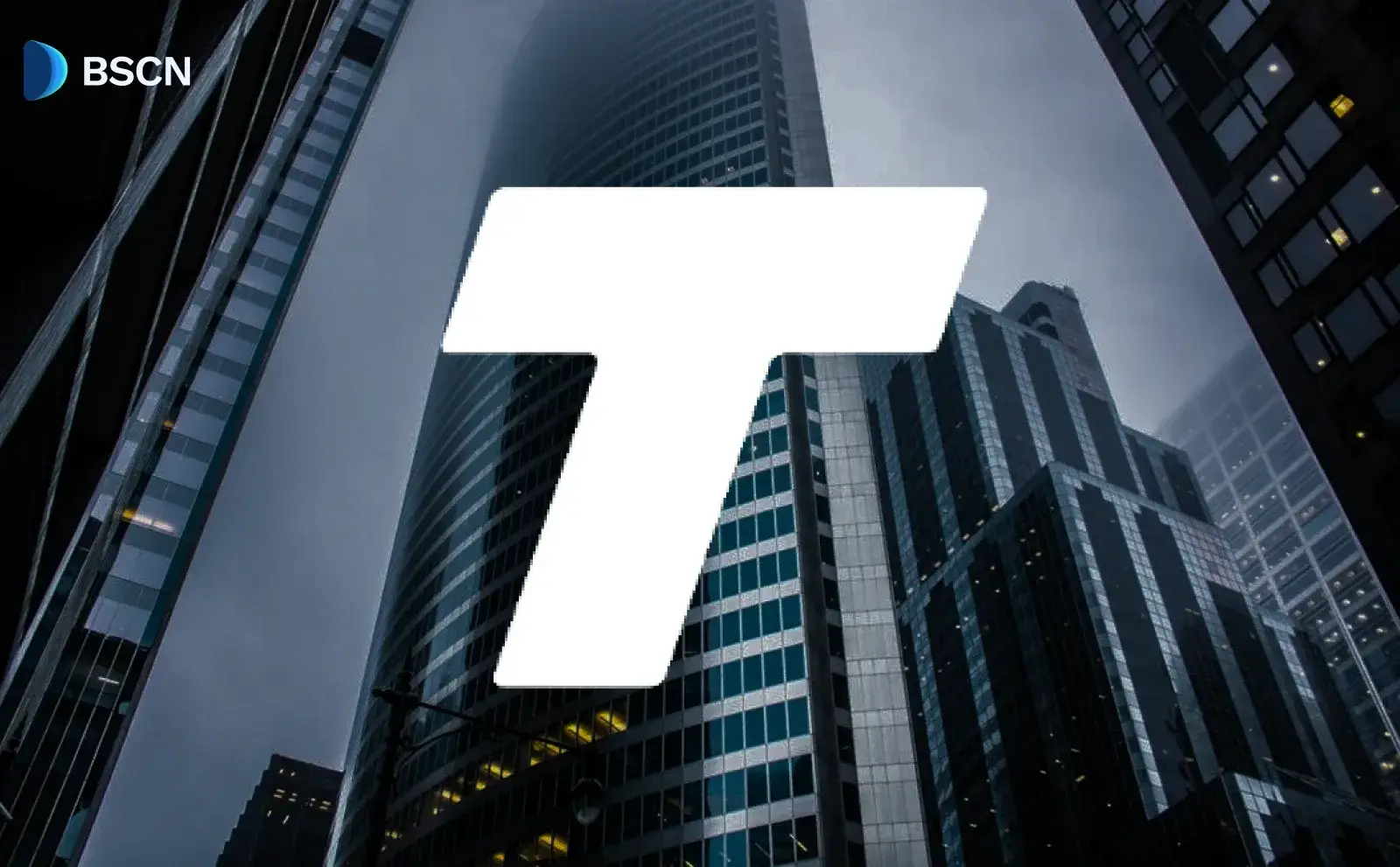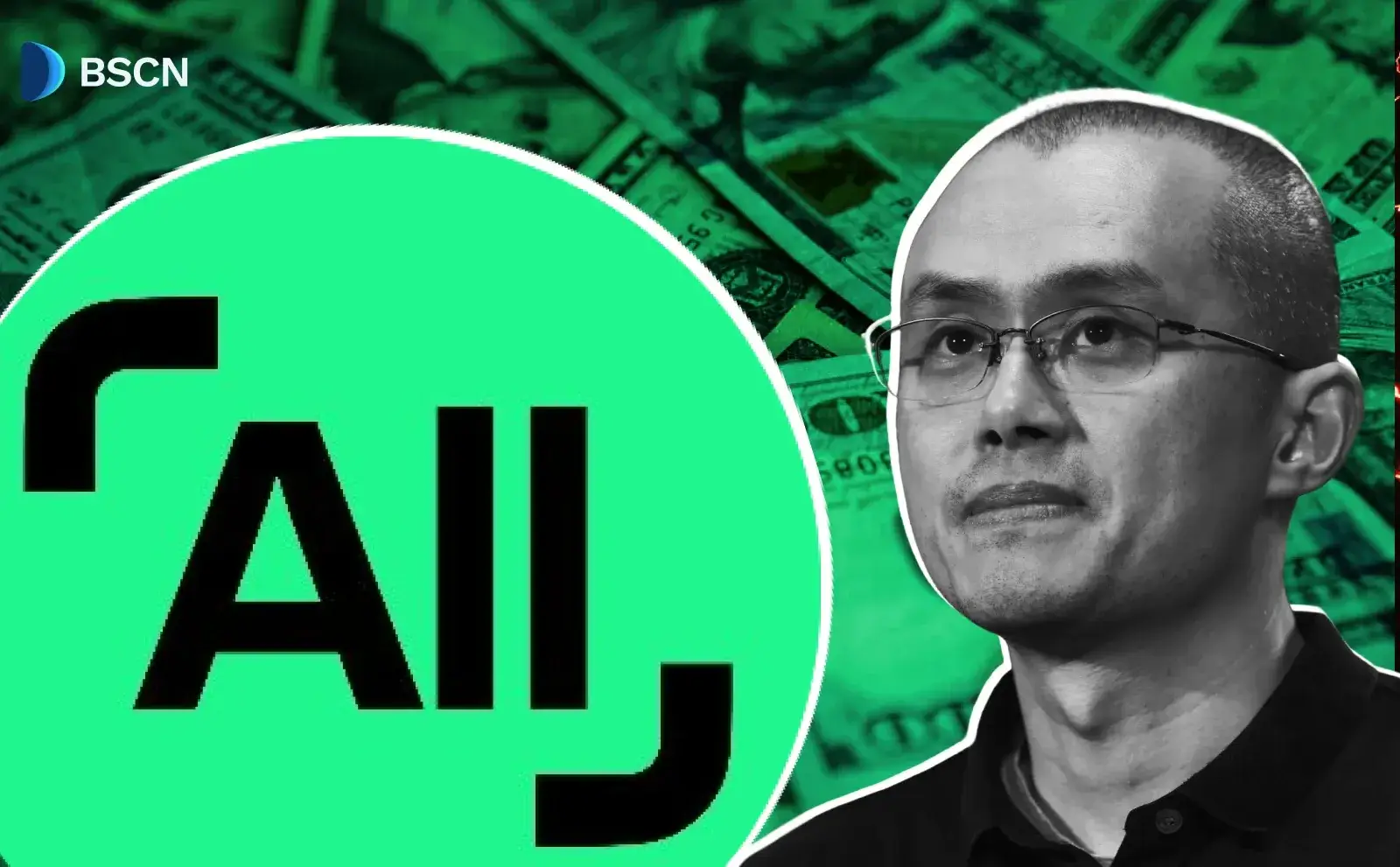Research
(Advertisement)
EXCLUSIVE: Execs from ION, CORE, VRA and ASX Share Unfiltered Insights

A collection of honest and unfiltered insights from founders and executives at some of crypto's leading platforms.
BSCN
October 6, 2025
(Advertisement)
Table of Contents
We reached out to some of the crypto's leading platforms and projects and asked their top executives to provide unfiltered takes on the industry's most interesting narratives and topics. The submissions we received were broad, ranging from unparalleled insights into crypto ecosystems, to the future of social media and RWAs. Here's what they sent us...
The Creator Economy Doesn’t Exist Yet. But It Can.
[Alexandru Iulian Florea, Founder and CEO of Ice Open Network]
If the news from this summer is anything to go by, the creator economy is shooting into the stratosphere — and the Big Tech boys all want you to believe they’re lifting it up.
TikTok raised its creator payouts in August, promising $0.40–$1.00+ per 1,000 views for long-form video. X tweaked its ad revenue sharing and subscriptions. And eMarketer says US creators will move more than $10.5 billion in brand deals this year. Globally, the creator economy is projected to hit $191.55 billion in 2025 and surpass $528 billion by 2030.
The numbers are breathtaking. They look like proof that creators are finally in charge, that they’re an economy in their own right. But let’s not kid ourselves: scale doesn’t equal sovereignty.
We’ve all heard the cliché that creators are building on borrowed land. The reality is harsher. It’s not borrowed — it’s a walled garden where the digital landlord holds the keys. What we call the creator economy is, at best, a subdivision of the digital landlord economy. Platforms own the ground. Creators pay the rent. That’s not empowerment — it’s tenancy.
And not even the kind of tenancy you get with real property, where contracts, notice periods, and tenant rights give you some protection. In the digital landlord economy, the rules change overnight. Algorithms shift. Payout formulas vanish into black boxes. Your entire audience can disappear without warning. These are landlords with monopoly power — and they’re the worst kind of landlord.
Bigger checks don’t fix the foundation. As long as creators are tenants, the wealth they generate — in engagement, data, and cultural capital — will always flow back to the landlords.
The real next step isn’t higher payouts. It’s ownership — of identity, of data, of community, of digital footprint. That’s what makes a true creator economy.
That’s the premise of Online+: the decentralized social layer where creators own the ground they build on. Rewards are transparent. Value flows directly to the people who generate it. Community belongs to its members, not to a landlord’s servers.
Because even the biggest of castles, when built on shaky foundations, will collapse. What the world needs is a creator economy that stands on its own soil — not as a tenant of the digital landlord economy, but as a free, sovereign ecosystem.
The shift won’t come from gimmicks or payout tweaks. It will come from decentralization — from platforms that put creators in control.
The creator economy doesn’t exist yet. But it can. And if you’re a creator, it’s time to stop renting your future.
Can blockchain restore trust in digital advertising?
[Olena Buyan, Chief Product Officer (CPO) at Verasity]
Trust has always been the currency of digital advertising. Advertisers need to know their budgets are reaching real human audiences and publishers need confidence that they’re being fairly compensated for the genuine attention their content generates. Yet in today’s digital ecosystem, that trust has eroded. Black-box platforms, opaque reporting, and the perpetual rise of ad fraud have left both sides second-guessing the numbers on their dashboards.
Legacy (Web2) ad tech has long tried to plug these gaps with layers of intermediaries and proprietary verification tools. Ironically, these tools are often controlled by the very same platforms they are meant to audit, leaving advertisers and publishers with no choice but to trust the platforms' own data and reporting — with little external accountability.
Blockchain flips this dynamic by making verification a neutral, tamper-proof part of the infrastructure itself. By design, blockchain technology is immutable and transparent, qualities that make it ideally suited for verifying impressions. Instead of relying on third-party reports or walled-garden metrics, every impression can be independently recorded and checked on an open ledger. Advertisers gain the assurance that their spend is being directed toward real engagement, while publishers can prove the true value of their audiences.
What this really delivers is a shared source of truth. Instead of advertisers and publishers relying on separate dashboards and conflicting reports, both sides can align on a single, verifiable record. This not only reduces disputes, but also opens the door to fairer pricing models, stronger partnerships, and ultimately, a healthier digital ad economy.
At Verasity, we’ve built our advertising infrastructure with this principle at its core. Trusted by partners across global markets, our AI, ML, and blockchain-powered fraud detection ad tech provides an auditable record of every ad view. For advertisers, that means budgets that reach real verified audiences. For publishers, it means higher CPMs. Most importantly, it means moving the digital advertising industry closer to what it has always needed: trust.
Core's Most Important Milestones
[Dan Edlebeck, Marketing Contributor at Core DAO]
Core is cementing its lead in Bitcoin DeFi with $317M TVL, the highest among Bitcoin-powered chains. Network security is also at record levels - 248.8M CORE and 5,153 BTC staked, with 98% of Bitcoin blocks delegated in the past week.
Accessibility is expanding fast: the Ledger app now supports BTC timelocking and CORE staking (~5% APY) from hardware wallets, Garden Finance enables native BTC -> Core bridging, and BitGo is integrating Core into institutional custody and compliance flows.
A major milestone landed this month, the first Bitcoin Staking ETP on the London Stock Exchange went live, powered by Core and Valour - bringing regulated, yield-bearing Bitcoin exposure to one of the world’s top financial markets. This validates Core’s infrastructure as the bridge for institutional Bitcoin adoption.
Ecosystem launches are reinforcing Core’s identity as the Bitcoin Everything Chain. Molten Finance established itself as the flagship DEX with $5M+ in its first Mission campaign. Volta Market expanded into derivatives with BTC/CORE perps with up to 250x leverage, while BITS Financial and AUSD are delivering native Bitcoin yield and stablecoin infrastructure. Taicho, an AI Agent from Akka Finance, also debuted - letting users swap, lend, stake, or farm on Core simply by typing their intent.
Yield opportunities are multiplying - from Colend’s boosted stCORE promos to Vault Layer × ASX RWA strategies (~24.9% APY), users now have multiple ways to put BTC and CORE to work. b14g’s new WBTC Vault adds to this momentum, offering ~8.7% APY, one of the highest BTC yields in DeFi.
For builders, the Core Commit Program (Cohort 2 now open) provides mentorship, visibility, and incubation pathways. Alongside it, the Core Builder Sprint rewards consistent, high-quality contributions from developers of all levels, strengthening the pipeline of innovation on Core.
With upcoming showcases like Bitcoin Fusion at TOKEN2049 Singapore, Core is proving it’s not just leading in TVL - it’s building the infrastructure for Bitcoin to shift from passive capital into an active, yield-generating asset class.
Why Real-World Asset Investments in DeFi Need Both Liquidity and Yield
[Ben Antes, Co-Founder of ASX]
As real-world assets (RWAs) make their way into decentralized finance (DeFi), the promise is compelling: investors can earn attractive yields on tokenized assets like bonds, real estate loans, or private credit while enjoying the transparency and speed of blockchain. But there’s a hidden tension here that many projects are struggling to solve: how to deliver high yields from long-term investments while also providing liquidity so investors can exit when they want.
Traditional finance faces the same issue. A bank lends out money in illiquid loans but promises depositors instant withdrawals. In DeFi, the problem is magnified: investors expect both the higher returns of private credit and the quick exit options of crypto trading that they are used to. But every dollar tied up in a long-term, yield-bearing loan or real world asset is a dollar that can’t instantly be returned to someone cashing out.
When too much capital is locked in illiquid assets, redemption requests can create stress, forcing projects to either pause withdrawals or sell assets at a loss. On the other hand, holding too much cash or low-yield collateral to meet redemptions eats into returns, making the investment less attractive. There is no reason to supply liquidity to a market for a fundamentally inferior yield.
This “liquidity versus yield” trade-off has already tripped up some RWA protocols. Many have learned that low secondary market trading for RWA tokens leaves investors stuck, even if the underlying asset is performing well. Others have been hit by timing mismatches, where loans pay out quarterly, but investors want monthly liquidity.
Ultimately, for RWAs to thrive in DeFi, projects must engineer systems that let investors earn the attractive yields of long-term assets without feeling locked in. Striking the right balance between yield and liquidity isn’t just a technical challenge—it’s the key to making tokenized real-world assets a mainstream financial reality.
Solving this problem on-chain can create the holy grail of yield bearing real world assets.
[Disclaimer: The content in this newsletter was provided by third parties and does not necessarily represent the views and opinions of BSCN. Cryptocurrency is always risky. You should always do you own research before interacting with any crypto platform or asset. For feedback or to be featured in BSCN's next opinion article, please reach out to [email protected]]
Read Next...
Disclaimer
Disclaimer: The views expressed in this article do not necessarily represent the views of BSCN. The information provided in this article is for educational and entertainment purposes only and should not be construed as investment advice, or advice of any kind. BSCN assumes no responsibility for any investment decisions made based on the information provided in this article. If you believe that the article should be amended, please reach out to the BSCN team by emailing [email protected].
Author
 BSCN
BSCNBSCN's dedicated writing team brings over 41 years of combined experience in cryptocurrency research and analysis. Our writers hold diverse academic qualifications spanning Physics, Mathematics, and Philosophy from leading institutions including Oxford and Cambridge. While united by their passion for cryptocurrency and blockchain technology, the team's professional backgrounds are equally diverse, including former venture capital investors, startup founders, and active traders.
(Advertisement)
Latest News
(Advertisement)
Crypto Project & Token Reviews
Project & Token Reviews
Comprehensive reviews of crypto's most interesting projects and assets
Learn about the hottest projects & tokens














